Best 100 Smart EBooks Reading Information, EBooks, Books, Products And Services
Plus Lots Of Promotional Contents, Free For All Visitors
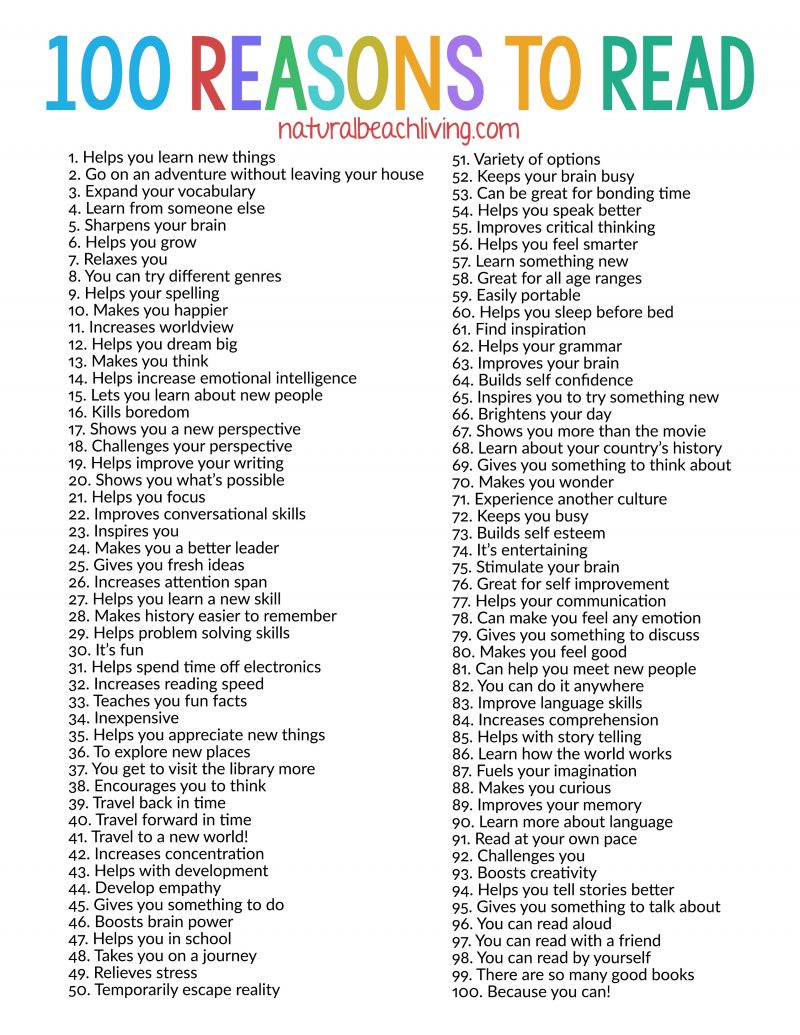
What Does Reading Do To Your Brain?
These 5 Effects Are Pretty Astounding
Reading is perhaps one of the best hobbies in the world, and one of the healthiest. Whether you’re reading fiction or nonfiction, a newspaper or a poem, reading is not only educational and informative, it’s entertaining and relaxing, too. And, although it is still a widely unexplored area, research on reading has shown its many benefits.
Over the years, doctors, scientists, and researchers have confirmed that reading is a stress-reducing activity that can lower your heart rate and blood pressure. It’s been proven to improve people’s memories, increase brain power, and even enhance empathic skills. Reading has even been linked to longer life spans.
1. Reading heightens brain connectivity.


It’s not uncommon for people to say that a book has changed their life, but did you know reading a novel can actually change the brain? Researchers at Emory University’s Center for Neuropolicy have found that reading a narrative can cause changes in the brain, not only while participating in the activity but in resting-state connectivity, too. What exactly does that mean?
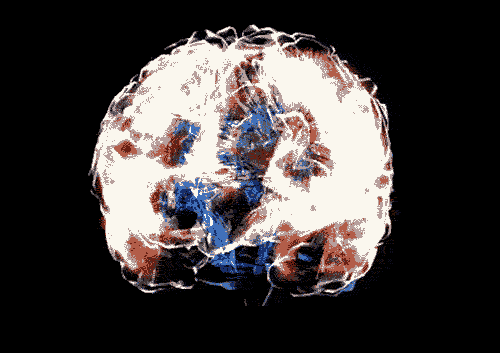

According to the study, when we read, the connection between the left temporal cortex of the brain — the area associated with language reception — is heightened. What’s more, that heightened activity continues for several days following reading.
Read all article at: https://www.bustle.com/p/what-does-reading-do-to-your-brain-these-5-effects-are-pretty-astounding-
++++
Reading
From Wikipedia, the free encyclopedia


Illustration of two people reading
Reading is the complex cognitive process of decoding symbols to derive meaning. It is a form of language processing.
Success in this process is measured as reading comprehension. Reading is a means for language acquisition, communication, and sharing information and ideas. The symbols are typically visual (written or printed) but may be tactile (Braille). Like all languages, it is a complex interaction between text and reader, shaped by prior knowledge, experiences, attitude, and the language community—which is culturally and socially situated. Readers use a variety of reading strategies to decode (to translate symbols into sounds or visual representations of speech) and comprehend. Readers may use context clues to identify the meaning of unknown words. Readers integrate the words they have read into their existing framework of knowledge or schema.
Other types of reading are not speech based writing systems, such as music notation or pictograms. The common link is the interpretation of symbols to extract the meaning from the visual notations or tactile signals (as in the case of Braille).
| Part of a series on |
| Reading |
|---|
| A person reading a book |
| Learning to read |
| Learning to read |
| Scientific Theories & Models |
| Dual route theorySimple view of reading |
| Cognitive processes |
| ComprehensionPhonemic awarenessPhonological awarenessSubvocalizationWord recognition |
| Reading instruction |
| Analytic phonicsBasal readerGuided readingIndependent readingLiterature circlePhonicsReciprocal teachingSynthetic phonicsWhole language |
| Reading rate |
| FluencySlow readingSpeed reading |
| Readability |
| ReadabilityReadability tests |
| Reading differences & disabilities |
| DyslexiaHyperlexiaReading disabilityReading for special needs |
| Language |
| Alphabetic principleBrailleDolch word listGraphemeHistory of printingLanguageLanguages by writing systemMorphemeOrthographyPhonemeSight wordVocabularyWritingWriting system |
| Literacy |
| Children’s literatureCritical literacyClose readingDistant readingGreat booksLiteracyLiteratureLiterary criticismFunctional illiteracyFamily literacy |
Overview
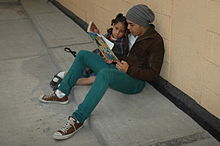

Volunteer reads to a girl at the Casa Hogar de las Niñas in Mexico City
Currently most reading is either of the printed word from ink or toner on paper, such as in a book, magazine, newspaper, leaflet, or notebook, or of electronic displays, such as computer displays, television, mobile phones or e-readers. Handwritten text may also be produced using a graphite pencil or a pen. Short texts may be written or painted on an object.
Often the text relates to the object, such as an address on an envelope, product info on packaging, or text on a traffic or street sign. A slogan may be painted on a wall. A text may also be produced by arranging stones of a different color in a wall or road. Short texts like these are sometimes referred to as environmental print.
Sometimes text or images are in relief, with or without using a color contrast. Words or images can be carved in stone, wood, or metal; instructions can be printed in relief on the plastic housing of a home appliance, or myriad other examples.
A requirement for reading is a good contrast between letters and background (depending on colors of letters and background, any pattern or image in the background, and lighting) and a suitable font size. In the case of a computer screen, it is important to see an entire line of text without scrolling.
The field of visual word recognition studies how people read individual words.[1][2][3] A key technique in studying how individuals read text is eye tracking. This has revealed that reading is performed as a series of eye fixations with saccades between them. Humans also do not appear to fixate on every word in a text, but instead pause on some words mentally while their eyes are moving. This is possible because human languages show certain linguistic regularities.
The process of recording information to read later is writing. In the case of computer and microfiche storage there is the separate step of displaying the written text. For humans, reading is usually faster and easier than writing.
Reading is typically an individual activity, though on occasion a person reads out loud for other listeners. Reading aloud for one’s own use, for better comprehension, is a form of intrapersonal communication: in the early 1970s[4] has been proposed the dual-route hypothesis to reading aloud, accordingly to which there were two separate mental mechanisms, or cognitive routes, that are involved in this case, with output of both mechanisms contributing to the pronunciation of a written stimulus.
Reading to young children is a recommended way to instill language and expression, and to promote comprehension of text. Personalised books for children are recommended to improve engagement in reading by featuring the child themselves in the story.[citation needed]
Before the reintroduction of separated text in the late Middle Ages, the ability to read silently was considered rather remarkable.
Purposes
Reading may be used for at school or work, incidentally during everyday life activities (such as reading the instructions in a cooking recipe), or for pleasure.
In the context of school or work, reading is a means of learning necessary information.
As a leisure activity, children and adults read because it is pleasant and interesting. In the US, about half of all adults read one or more books for pleasure each year. About 5% read more than 50 books per year.[8] Americans read more if they have more education, if they read fluently and easily, if they are female, if they live in cities, and if they have higher socioeconomic status. Children become better readers when they know more about the world in general, and when they perceive reading as fun, rather than another chore to be performed.
Reading skills
Main article: Learning to read
Literacy is the ability to use the symbols of a writing system. It is the ability to interpret what the information symbols represent, and re-create those same symbols so that others can derive the same meaning. Illiteracy is the inability to derive meaning from the symbols used in a writing system.
Dyslexia refers to a cognitive difficulty with reading and writing. It is defined as brain-based type of learning disability that specifically impairs a person’s ability to read. The term dyslexia can refer to two disorders: developmental dyslexia which is a learning disability. Alexia (acquired dyslexia) refers to reading difficulties that occur following brain damage, stroke, or progressive illness.[14][15]
Major predictors of an individual’s ability to read both alphabetic and nonalphabetic scripts are phonological awareness, rapid automatized naming and verbal IQ. Being taught to read at an early age (such as five years old) does not ultimately result in better reading skills, and if it replaces more developmentally appropriate activities, then it may cause other harms.
Reading rate


Average reading rate in words per minute (wpm) depending on age and measured with different tests in English, French and German
Many studies show that increasing reading speed improves comprehension.[18] Reading speed requires a long time to reach adult levels. The table to the right shows how reading-rate varies with age,[19] regardless of the period (1965 to 2005) and the language (English, French, German). The Taylor values probably are higher, for disregarding students who failed the comprehension test. The reading test by the French psychologist Pierre Lefavrais (“L’alouette”, published in 1967) tested reading aloud, with a penalty for errors, and could, therefore, not be a rate greater than 150 wpm. According to Carver (1990), children’s reading speed increases throughout the school years. On average, from grade 2 to college, reading rate increases 14 standard-length words per minute each year (where one standard-length word is defined as six characters in text, including punctuation and spaces). Note that the data from Taylor (English) and Landerl (German) are based on texts of increasing difficulty; other data were obtained when all age groups were reading the same text.
Rates of reading include reading for memorization (fewer than 100 words per minute [wpm]); reading for learning (100–200 wpm); reading for comprehension (200–400 wpm); and skimming (400–700 wpm). Reading for comprehension is the essence of the daily reading of most people. Skimming is for superficially processing large quantities of text at a low level of comprehension (below 50%).
Advice for choosing the appropriate reading-rate includes reading flexibly, slowing when concepts are closely presented and when the material is new, and increasing when the material is familiar and of thin concept. Speed reading courses and books often encourage the reader to continually accelerate; comprehension tests lead the reader to believe his or her comprehension is continually improving; yet, competence-in-reading requires knowing that skimming is dangerous, as a default habit.
Scientific studies have demonstrated that reading—defined here as capturing and decoding all the words on every page—faster than 900 wpm is not feasible given the limits set by the anatomy of the eye.[21]
Reading speed has been used as a measure in research to determine the effect of interventions on human vision. A Cochrane Systematic Review used reading speed in words per minute as the primary outcome in comparing different reading aids for adults with low vision.
Skill development


Addy Vannasy reads aloud to children at a village “Discovery Day” in Laos. Reading aloud is a common technique for improving literacy rates. Big Brother Mouse, which organized the event, trains its staff in read-aloud techniques such as making eye contact with the audience, modulating one’s voice, and pausing occasionally for dramatic effect.
Both lexical and sub-lexical cognitive processes contribute to how we learn to read.
Sub-lexical reading, involves teaching reading by associating characters or groups of characters with sounds or by using phonics or synthetic phonics learning and teaching methodology, which some argue is in competition with whole language methods.
Lexical reading involves acquiring words or phrases without attention to the characters or groups of characters that compose them or by using whole language learning and teaching methodology. Some argue that this competes with phonics and synthetic phonics methods, and that the whole language approach tends to impair learning to spell.
Other methods of teaching and learning to read have developed, and become somewhat controversial.
Learning to read in a second language, especially in adulthood, may be a different process than learning to read a native language in childhood. There are cases of very young children learning to read without having been taught.[28] Such was the case with Truman Capote who reportedly taught himself to read and write at the age of five. There are also accounts of people who taught themselves to read by comparing street signs or Biblical passages to speech. The novelist Nicholas Delbanco taught himself to read at age six during a transatlantic crossing by studying a book about boats.
Brain activity in young and older children can be used to predict future reading skill. Cross model mapping between the orthographic and phonologic areas in the brain are critical in reading. Thus, the amount of activation in the left dorsal inferior frontal gyrus while performing reading tasks can be used to predict later reading ability and advancement. Young children with higher phonological word characteristic processing have significantly better reading skills later on than older children who focus on whole-word orthographic representation.[30]
Methods of reading
Reading is an intensive process in which the eye quickly moves to assimilate text—seeing just accurately enough to interpret groups of symbols. It is necessary to understand visual perception and eye movement to understand the reading process.[31]
There are several types and methods of reading, with differing rates that can be attained for each, for different kinds of material and purposes:
- Subvocalized reading combines sight reading with internal sounding of the words as if spoken. Advocates of speed reading claim it can be a bad habit that slows reading and comprehension, but other studies indicate the reverse, particularly with difficult texts.[32][33]
- Speed reading is a collection of methods for increasing reading speed without an unacceptable reduction in comprehension or retention. Methods include skimming or the chunking of words in a body of text to increase the rate of reading. It is closely connected to speed learning.
- Incremental reading is a software-assisted reading method designed for long-term memorization. “Incremental reading” means “reading in portions”: in each session, parts of several electronic articles are read inside a prioritized reading list. In the course of reading, important pieces of information are extracted and converted into flashcards, which are then reviewed by a spaced repetition algorithm.
- Proofreading is a kind of reading for the purpose of detecting typographical errors. One can learn to do it rapidly, and professional proofreaders typically acquire the ability to do so at high rates, faster for some kinds of material than for others, while they may largely suspend comprehension while doing so, except when needed to select among several possible words that a suspected typographic error allows. A good proofreader needs to have a strong vocabulary and should be meticulous in their approach.
- Rereading is reading a book more than once. “One cannot read a book: one can only reread it,” Vladimir Nabokov once said.[34] A paper published in the Journal of Consumer Research (Cristel Antonia (2012)) found re-reading offers mental health benefits because it allows for a more profound emotional connection and self-reflection, versus the first reading, which is more focused on the events and plot.[35]


Many take notes while reading.
- Structure-proposition-evaluation (SPE) method, popularized by Mortimer Adler in How to Read a Book, mainly for non-fiction treatise, in which one reads a writing in three passes: (1) for the structure of the work, which might be represented by an outline; (2) for the logical propositions made, organized into chains of inference; and (3) for evaluation of the merits of the arguments and conclusions. This method involves suspended judgment of the work or its arguments until they are fully understood.
- Survey-question-read-recite-review (SQ3R) method, often taught in public schools, which involves reading toward being able to teach what is read, and is appropriate for instructors preparing to teach material without referring to notes.
- Multiple intelligences-based methods, which draw on the reader’s diverse ways of thinking and knowing to enrich appreciation of the text. Reading is fundamentally a linguistic activity: one can basically comprehend a text without resorting to other intelligences, such as the visual (e.g., mentally “seeing” characters or events described), auditory (e.g., reading aloud or mentally “hearing” sounds described), or even the logical intelligence (e.g., considering “what if” scenarios or predicting how the text will unfold based on context clues). However, most readers already use several kinds of intelligence while reading. Doing so in a more disciplined manner—i.e., constantly, or after every paragraph—can result in a more vivid, memorable experience.
- Rapid serial visual presentation (RSVP) reading involves presenting the words in a sentence one word at a time at the same location on the display screen, at a specified eccentricity. RSVP eliminates inter-word saccades, limits intra-word saccades, and prevents reader control of fixation times (Legge, Mansfield, & Chung, 2001).[36] RSVP controls for differences in reader eye movement, and consequently is often used to measure reading speed in experiments.
Reading process is therefore a communication context.
Assessment
Different types of reading tests exist:
- Sight word reading: reading words of increasing difficulty until they become unable to read or understand the words presented to them. Difficulty is manipulated by using words that have more letters or syllables, are less common and have more complicated spelling–sound relationships.[citation needed]
- Nonword reading: reading lists of pronounceable nonsense words out loud. The difficulty is increased by using longer words, and also by using words with more complex spelling or sound sequences.[citation needed][37]
- Reading comprehension: a passage is presented to the reader, which they must read either silently or out loud. Then a series of questions are presented that test the reader’s comprehension of this passage.
- Reading fluency: the rate with which individuals can name words.
- Reading accuracy: the ability to correctly name a word on a page.
Some tests incorporate several of the above components at once. For instance, the Nelson-Denny Reading Test scores readers both on the speed with which they can read a passage, and also their ability to accurately answer questions about this passage.[citation needed] Recent research has questioned the validity of the Nelson-Denny Reading Test, especially with regard to the identification of reading disabilities.
Cognitive benefits
Reading books and writing are among brain-stimulating activities shown to slow down cognitive decline in old age, with people who participated in more mentally stimulating activities over their lifetimes having a slower rate of decline in memory and other mental capacities.[39] Reading for pleasure has been linked to increased cognitive progress in vocabulary and mathematics during adolescence. [40][41] Sustained high volume lifetime reading has been associated with high levels of academic attainment.[42] Moreover, the cognitive benefits of reading continue into mid-life and old age.
Effects
Night reading has benefits to calm the nerves by eliminating excess sound and vision stimulus resulting in better sleep.
Lighting
Reading from paper and from some screens requires more lighting than many other activities. Therefore, the possibility of doing this comfortably in cafés, restaurants, buses, at bus stops or in parks greatly varies depending on available lighting and time of day.
Reading from screens that produce their own light does not depend on external light, except that external light may lessen visual fatigue. For controlling what is on the screen (scrolling, turning the page, etc.), a touch screen or keyboard illumination further reduces dependency on external light.
History
The history of reading dates back to the invention of writing during the 4th millennium BC. Although reading print text is now an important way for the general population to access information, this has not always been the case. With some exceptions, only a small percentage of the population in many countries was considered literate before the Industrial Revolution. Some of the pre-modern societies with generally high literacy rates included classical Athens and the Islamic Caliphate.
Scholars assume that reading aloud (Latin clare legere) was the more common practice in antiquity, and that reading silently (legere tacite or legere sibi) was unusual.[47] In his Confessions, Saint Augustine remarks on Saint Ambrose‘s unusual habit of reading silently in the 4th century AD.
During the Age of Enlightenment, elite individuals promoted passive reading, rather than creative interpretation. Reading has no concrete laws, but lets readers escape to produce their own products introspectively, promoting deep exploration of texts during interpretation. Some thinkers of that era believed that construction, or the creation of writing and producing a product, was a sign of initiative and active participation in society—and viewed consumption (reading) as simply taking in what constructors made.[49] Also during this era, writing was considered superior to reading in society. They considered readers of that time passive citizens, because they did not produce a product. Michel de Certeau argued that the elites of the Age of Enlightenment were responsible for this general belief. Michel de Certeau believed that reading required venturing into an author’s land, but taking away what the reader wanted specifically. This view held that writing was a superior art to reading within the hierarchical constraints of the era.
In 18th-century Europe, the then new practice of reading alone in bed was, for a time, considered dangerous and immoral. As reading became less a communal, oral practice, and more a private, silent one—and as sleeping increasingly moved from communal sleeping areas to individual bedrooms, some raised concern that reading in bed presented various dangers, such as fires caused by bedside candles. Some modern critics, however, speculate that these concerns were based on the fear that readers—especially women—could escape familial and communal obligations and transgress moral boundaries through the private fantasy worlds in books.
Gallery
- A Young Girl Reading (c. 1770), oil painting by Jean-Honoré Fragonard
- Miss Auras, by John Lavery, depicts a woman reading a book
- Youth reading, Persian miniature by Reza Abbasi (1625-6)
- Girl Reading (1889), by Fritz von Uhde. Oil paint on canvas
- Reader, a painting by Honoré Daumier
+++++++++++++++++++
++++++++++++++++
+++++++++++
Why I read a book a day
(and why you should too):
the law of 33% | Tai Lopez | TEDxUBIWiltz
++++++++++
+Paperbackfrom $1.96
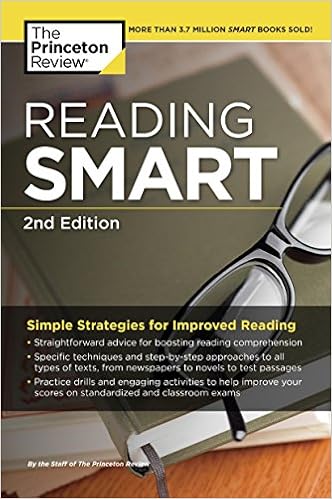 ++++++++Kindle
++++++++Kindle![]()
![]()
![]()
![]()
Paperbackfrom $1.96
++++++++++

Hardcoverfrom $13.63Kindle![]()
![]()
![]()
![]()
With half a million copies in print, How to Read a Book is the best and most successful guide to reading comprehension for the general reader, completely rewritten and updated with new material.
A CNN Book of the Week: “Explains not just why we should read books, but how we should read them. It’s masterfully done.” –Farheed Zakaria
Originally published in 1940, this book is a rare phenomenon, a living classic that introduces and elucidates the various levels of reading and how to achieve them—from elementary reading, through systematic skimming and inspectional reading, to speed reading. Readers will learn when and how to “judge a book by its cover,” and also how to X-ray it, read critically, and extract the author’s message from the text.
Also included is instruction in the different techniques that work best for reading particular genres, such as practical books, imaginative literature, plays, poetry, history, science and mathematics, philosophy and social science works.
Finally, the authors offer a recommended reading list and supply reading tests you can use measure your own progress in reading skills, comprehension, and speed.
+++++++++++

Hardcoverfrom $6.79Kindle![]()
![]()
![]()
![]()
A thoroughly revised and updated edition of Thomas C. Foster’s classic guide—a lively and entertaining introduction to literature and literary basics, including symbols, themes, and contexts—that shows you how to make your everyday reading experience more rewarding and enjoyable.
While many books can be enjoyed for their basic stories, there are often deeper literary meanings interwoven in these texts. How to Read Literature Like a Professor helps us to discover those hidden truths by looking at literature with the eyes—and the literary codes—of the ultimate professional reader: the college professor.
What does it mean when a literary hero travels along a dusty road? When he hands a drink to his companion? When he’s drenched in a sudden rain shower? Ranging from major themes to literary models, narrative devices, and form, Thomas C. Foster provides us with a broad overview of literature—a world where a road leads to a quest, a shared meal may signify a communion, and rain, whether cleansing or destructive, is never just a shower—and shows us how to make our reading experience more enriching, satisfying, and fun.
This revised edition includes new chapters, a new preface, and a new epilogue, and incorporates updated teaching points that Foster has developed over the past decade.
+++++++++++++
![How to Read Novels Like a Professor: A Jaunty Exploration of the World's Favorite Literary Form by [Foster, Thomas C.]](https://images-na.ssl-images-amazon.com/images/I/51e2rh4Rp6L.jpg)
![How to Read Novels Like a Professor: A Jaunty Exploration of the World's Favorite Literary Form by [Foster, Thomas C.]](https://images-na.ssl-images-amazon.com/images/I/51e2rh4Rp6L.jpg)
Kindle $10.21
Of all the literary forms, the novel is arguably the most discussed . . . and fretted over. From Miguel de Cervantes’s Don Quixote to the works of Jane Austen, F. Scott Fitzgerald, Ernest Hemingway, and today’s masters, the novel has grown with and adapted to changing societies and technologies, mixing tradition and innovation in every age throughout history.
Thomas C. Foster—the sage and scholar who ingeniously led readers through the fascinating symbolic codes of great literature in his first book, How to Read Literature Like a Professor—now examines the grammar of the popular novel. Exploring how authors’ choices about structure—point of view, narrative voice, first page, chapter construction, character emblems, and narrative (dis)continuity—create meaning and a special literary language, How to Read Novels Like a Professor shares the keys to this language with readers who want to get more insight, more understanding, and more pleasure from their reading.
![The Library Book by [Orlean, Susan]](https://images-na.ssl-images-amazon.com/images/I/51GdTSY0vpL.jpg)
![The Library Book by [Orlean, Susan]](https://images-na.ssl-images-amazon.com/images/I/51GdTSY0vpL.jpg)
Hardcover $16.79 Kindle $10.59
A REESE WITHERSPOON x HELLO SUNSHINE BOOK CLUB PICK
A WASHINGTON POST TOP 10 BOOK OF THE YEAR * A NEW YORK TIMES BESTSELLER and NEW YORK TIMES NOTABLE BOOK OF 2018
“A constant pleasure to read…Everybody who loves books should check out The Library Book.” —The Washington Post
“CAPTIVATING…DELIGHTFUL.” —Christian Science Monitor * “EXQUISITELY WRITTEN, CONSISTENTLY ENTERTAINING.” —The New York Times * “MESMERIZING…RIVETING.” —Booklist (starred review)
A dazzling love letter to a beloved institution—and an investigation into one of its greatest mysteries—from the bestselling author hailed as a “national treasure” by The Washington Post.
On the morning of April 29, 1986, a fire alarm sounded in the Los Angeles Public Library. As the moments passed, the patrons and staff who had been cleared out of the building realized this was not the usual fire alarm. As one fireman recounted, “Once that first stack got going, it was ‘Goodbye, Charlie.’” The fire was disastrous: it reached 2000 degrees and burned for more than seven hours. By the time it was extinguished, it had consumed four hundred thousand books and damaged seven hundred thousand more. Investigators descended on the scene, but more than thirty years later, the mystery remains: Did someone purposefully set fire to the library—and if so, who?
Weaving her lifelong love of books and reading into an investigation of the fire, award-winning New Yorker reporter and New York Times bestselling author Susan Orlean delivers a mesmerizing and uniquely compelling book that manages to tell the broader story of libraries and librarians in a way that has never been done before.
In The Library Book, Orlean chronicles the LAPL fire and its aftermath to showcase the larger, crucial role that libraries play in our lives; delves into the evolution of libraries across the country and around the world, from their humble beginnings as a metropolitan charitable initiative to their current status as a cornerstone of national identity; brings each department of the library to vivid life through on-the-ground reporting; studies arson and attempts to burn a copy of a book herself; reflects on her own experiences in libraries; and reexamines the case of Harry Peak, the blond-haired actor long suspected of setting fire to the LAPL more than thirty years ago.
Along the way, Orlean introduces us to an unforgettable cast of characters from libraries past and present—from Mary Foy, who in 1880 at eighteen years old was named the head of the Los Angeles Public Library at a time when men still dominated the role, to Dr. C.J.K. Jones, a pastor, citrus farmer, and polymath known as “The Human Encyclopedia” who roamed the library dispensing information; from Charles Lummis, a wildly eccentric journalist and adventurer who was determined to make the L.A. library one of the best in the world, to the current staff, who do heroic work every day to ensure that their institution remains a vital part of the city it serves.
Brimming with her signature wit, insight, compassion, and talent for deep research, The Library Book is Susan Orlean’s thrilling journey through the stacks that reveals how these beloved institutions provide much more than just books—and why they remain an essential part of the heart, mind, and soul of our country. It is also a master journalist’s reminder that, perhaps especially in the digital era, they are more necessary than ever.
++++++



Lore100 Reasons to read 1. It’s fun! 2. You’ll learn about yourself. 3. You’ll learn about the world. 4. It improves your communication skills. 5. You’ll forget your worries. 6. You can do it anytime. 7. You can do it in any weather. 8. You’ll make your teachers proud. 9. It will help you do well in school. 10. It doesn’t require batteries! 11. It puts the universe at your fingertips. 12. You can see through someone else’s eyes. 13. It can make you laugh! 14. It can scare your pants off! 15. It can take you places you’ve never dreamed of. 16. You’ll be inspired. 17. You can learn how things work. 18. It can help you find solutions to any problem. 19. You can dream about the future. 20. It inspires life-long learning. 21. Once you start you won’t want to stop. 22. It can give you great quotes or jokes to share. 23. You can experience things you would never do. 24. You won’t have to judge a book by its cover. 25. You can learn how to be better at anything. 26. It will increase your vocabulary. 27. You’ll be a better writer. 28. You’ll always have something to look forward to. 29. You’ll be meeting interesting characters. 30. You can do it by yourself. 31. It makes you smarter. 32. It gives you some time to think. 33. You learn about animals. 34. You learn how to help others. 35. It increases your knowledge. 36. It makes you warm inside. 37. It helps you learn to concentrate. 38. There are millions of stories to choose from. 39. Books help you learn to cook. 40. Your imagination gets better. 41. Your Grandparents will be proud. 42. You can learn about pirates! 43. Problem solving skills are learned. 44. You will find others with the same interests. 45. Books are handy. 46. Rereading a book is better than television reruns. 47. Stories stay in your head forever. 48. Some stories stay in your heart forever. 49. You get to choose what you read. 50. Reading can be done with a good friend. 51. You’ll know more. 52. It makes time fly by. 53. You’ll understand people better. 54. It keeps you out of trouble. 55. You can do it anywhere. 56. It will help you grow. 57. You’ll impress your parents and friends. 58. It reduces stress. 59. it’s the cheapest way to travel the world. 60. You can live many lives. 61. There are no commercials. 62. You’ll learn other points of view. 63. It can make you cry! 64. It can make you think. 65. You can have the adventure of a lifetime. 66. You can learn how to do something new. 67. It doesn’t cost much. 68. You can experience the past. 69. You can explore new horizons. 70. You’ll be great at trivia games. 71. It can change your life. 72. It doesn’t need electricity. 73. It’s a quiet activity. 74. It’s always in style. 75. It sparks your imagination. 76. You can learn how to make something new. 77. It’s your link to the rest of the world. 78. It’s a good way to challenge yourself. 79. You’ll always have something to talk about. 80. You can do it with your family. 81. Books can make you calm. 82. Books can make you scared! 83. Books can enlighten you. 84. Books can make you aware. 85. They can be a pal. 86. They can help your brain. 87. It will tell about the past. 88. It can help with the future. 89. They can help our memories. 90. They can make new memories. 91. They can spark our curiosity. 92. You can get some books for free. 93. They make a great gift for someone. 94. They make a great gift to yourself! 95. You can read while you fish. 96. You can read on a bus. 97. You can read in a car. 98. You can read here or there. 99. You can read anywhere! 100. The book is always better than the film! WOW!
L


Lor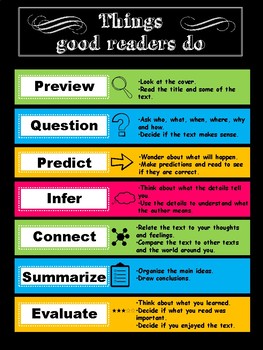

by CARSON DELLOSA+++++++++
Best 100 plus Questions and Answers for Smart ebooks reading information
1+Q = What is the number one or first question for sebkr?
the number one question is
1+A = the number one or first Answer for sbr is?
2+Q = What is the number one or first question for sebkr?
2+A = the number one or first Answer for sbr is? 1+Q = What is the number one or first question for sebkr?
3+Q = What is the number one or first question for sebkr?
3+A = the number one or first Answer for sbr is? 4+Q = What is the number one or first question for sebkr?
4+A = the number one or first Answer for sbr is?
5+Q = What is the number one or first question for sebkr?
5+A = the number one or first Answer for sbr is?
1+Q = What is the number one or first question for sebkr?
1+A = the number one or first Answer for sbr is?
1+Q = What is the number one or first question for sebkr?
1+A = the number one or first Answer for sbr is?
2+Smart learning and Remembering
3+Smart learning and Remembering
++++++++++++
For Writing Them. … SMART goals are important. … SMART goals are goals which are specific, measurable, achievable, relevant, and time-bound.
==========
reading
noun1.perusal, study, review, examination, This knowledge makes the second reading as enjoyable as the first.2.learning, education, knowledge, scholarship,book -learning a man of great imagination, of wide reading and deep learning3.recital, performance, lesson, lecture, sermon, a poetry reading4.interpretation, take(informal, chiefly U.S.), understanding, treatment, version, construction, impression, grasp, conception There is a reading of this situation which upsets people.5.measurement, record, figure, indication The gauge must be giving a faulty reading.+++
reading
(ˈriːdɪŋ)n1.a. the act of a person who readsb. (as modifier): a reading room; a reading lamp.2.a. ability to readb. (as modifier): the reading public; a child of reading age.3. any matter that can be read; written or printed text4. a public recital or rendering of a literary work5. (Literary & Literary Critical Terms) the form of a particular word or passage in a given text, esp where more than one version exists6. an interpretation, as of a piece of music, a situation, or something said or written7. knowledge gained from books: a person of little reading.8. a measurement indicated by a gauge, dial, scientific instrument, etc9. (Parliamentary Procedure) parliamentary procedurea. the formal recital of the body or title of a bill in a legislative assembly in order to begin one of the stages of its passageb. one of the three stages in the passage of a bill through a legislative assembly. See first reading, second reading, third reading10. (Law) the formal recital of something written, esp a will
Reading
https://www.thefreedictionary.com/reading
n.1. the action or practice of a person who reads.2. the oral interpretation of written language.3. the interpretation given in the performance of a dramatic part, musical composition, etc.4. the extent to which a person has read; literary knowledge.5. matter read or for reading: light reading.6. the form or version of a given passage in a particular text: the various readings of a line in Shakespeare.7. an instance or occasion in which a text or literary work is read or recited in public.8. an interpretation given to anything: What is your reading of the situation?9. the indication of a graduated instrument: The thermometer reading is++
| Noun | 1. |   |
| 2. | reading – a particular interpretation or performance; “on that reading it was an insult”; “he was famous for his reading of Mozart”interpretation – an explanation that results from interpreting something; “the report included his interpretation of the forensic evidence” | |
| 3. | 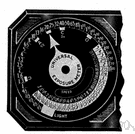  | |
| 4. |   | |
| 5. | 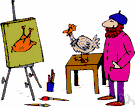  | |
| 6. | Reading – a city on the River Thames in Berkshire in southern EnglandEngland – a division of the United KingdomBerkshire – a county in southern England | |
| 7. | reading – a public instance of reciting or repeating (from memory) something prepared in advance; “the program included songs and recitations of well-loved poems”recitation, recitaloral presentation, public speaking, speechmaking, speaking – delivering an address to a public audience; “people came to see the candidates and hear the speechmaking”declamation – recitation of a speech from memory with studied gestures and intonation as an exercise in elocution or rhetoric | |
| 8. | reading – the act of measuring with meters or similar instruments; “he has a job meter reading for the gas company”meter readingmeasurement, measuring, mensuration, measure – the act or process of assigning numbers to phenomena according to a rule; “the measurements were carefully done”; “his mental measurings proved remarkably accurate” |
++++
Learning
From Wikipedia, the free encyclopedia
Learning is the process of acquiring new understanding, knowledge, behaviors, skills, values, attitudes, and preferences.[1] The ability to learn is possessed by humans, animals, and some machines; there is also evidence for some kind of learning in certain plants.[2] Some learning is immediate, induced by a single event (e.g. being burned by a hot stove), but much skill and knowledge accumulates from repeated experiences. The changes induced by learning often last a lifetime, and it is hard to distinguish learned material that seems to be “lost” from that which cannot be retrieved.[3]
Human learning starts at birth (it might even start before[4]) and continues until death as a consequence of ongoing interactions between people and their environment.
Read more : Learning + From Wikipedia, the free encyclopedia
https://wiki2.org/en/Learning
++++